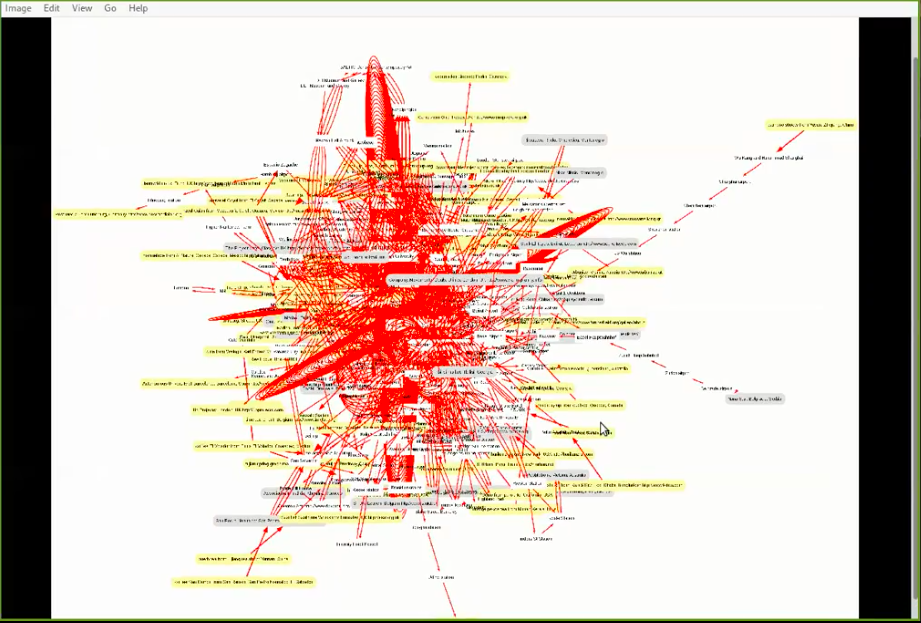(Learning Session with Kate Rich – 04032021)
Everyone from different cities is joining. They are from lumbung members, mostly: Gudskul from Jakarta, Festival Le Sur Niger from Mali, Britto Arts Trust from Dhaka, Trampolin House from Copenhagen and others. It was started with a quick introduction.
Kate is currently in Tasmania, Australia. She’s going to talk about the feral trade. As an artist, she has been dealing with trade for almost twenty years. The project is called feral trade. It encompasses vegetables, olive oil, Iranian sweets, salt from Gujarat, honey from London, etc.
It is like an export-import grocery business yet the difference is her customers are friends or friends of friends. Some of the shipment travels through people’s bags. For instance, knowing people in a conference who depart from Mexico to Berlin or other places.
How the system works is by using the existing journeys of people. At the start, it’s really an art and cultural travel, for an event. Gathering, then, is very important. It’s how our politics deal with places. The idea is to make full use of the journey more than just staying in a hotel.
Kate shows the map of how the goods travel. They’re recorded on a website during the journey of who takes what to whom. Some stories are quite dramatic and interesting. The networks work with Kate in the center of it to get things and people connected.
[map 01]

It’s really based on connection, energy, and interest. “It’s my life, my social connections,” said Kate. She showed another way of looking at the networks through the logo of the enterprises involve.
Kate shows a picture of a coffee bag manually written. She’s intended to challenge the meaning of transparency. On the bag was transparent information on how much it takes for the product to reach certain places including the customs fee, agents, etc. it’s like mimicking the nutrition information on the label.
It’s really like a business but also art at the same time. How it challenges the convention in business which normally hides the amount of profit taken from a product. “That’s why I like to challenge the word transparency they use,” said Kate.
How does it work? In 2019, Kate and some others created a festival called RADMIN. It tries to see and inquire after the administration. How administration becomes part of art. It’s not separated ideas. It’s part of the whole kind of experiment. It shows budget and non-budgetary. How whole things work altogether.
Question by Ajeng: “When you ask people to bring the products to the buyers, do you also pay them?”
Kate said no. It’s more like their pleasure and interest to try, to be part of the project. So, just asking if they go somewhere whether or not they could bring something. “So, it’s very disorganized, basically”. It involves good conversations among couriers, buyers, etc.
Gertrude: Could the poster of the budget be the product?’
Turning into a product is interesting. She has a plan for that. It could also be discussed further academically, to see the budget as part of the product.
Many questions about whether it is legal or not. Kate finds it is interesting. It’s not legal as several products could not travel from several parts to others. “It is also illegal to take groceries in your bag with you.” It’s worth questioning then when big supermarkets could deal with this while others are considered black market.
“We have given a lot of rights to trade and move around. We internalized this idea that, for instance, it could be illegal. We need to try to open up, to see that as normal, especially across borders”
Have you considered putting conversation into products as part of the values in which the conversation takes parts? Also, maybe, to generate it through social media like Instagram?
Answering to question by Yong Sun, Kate finds it is interesting. She has made a concept of a report through which we could see. I actually am not a social media user but I think that’s a good idea.
Ajeng asked about the schedule of the process to which Kate said that it is indeed very disorganized. It is just happening organically when people text Kate what they need. For instance, coffee. Another case is someone going to travel and tell Kate what they could bring along. It is designed to be unsystematic. It is more like life rather than a business.
Question by Kym on how to deal with license especially as Kate is dealing with food through which Kate answered that it is challenging especially when dealing with products like cheese. It’s hard to deal with the mafia, government-mafia. It’s crazy when dealing with legal and illegal. There are tricks, for instance, labelling as food producers. Kate explained the custom that it is addressed to friends she knew. By that, they cannot define whether it is commercial or not.
Question by Grace on how to send the products to unfamiliar places like Indonesia if Kate knows no one. Kate explained that it depends on the request then she would explain how the process works especially regarding the time of arrival as it depends on friends of friends who are coming.
According to Ajeng, in the context of lumbung members, this idea could possibly be applied as it already has the ecosystem. It could be easier as there’s been already an audience. While the products could be more than groceries. It could be artworks etc. Perhaps designing mailing could possibly happen.
Kate agrees, that even it could be more organized by managing the social media.
